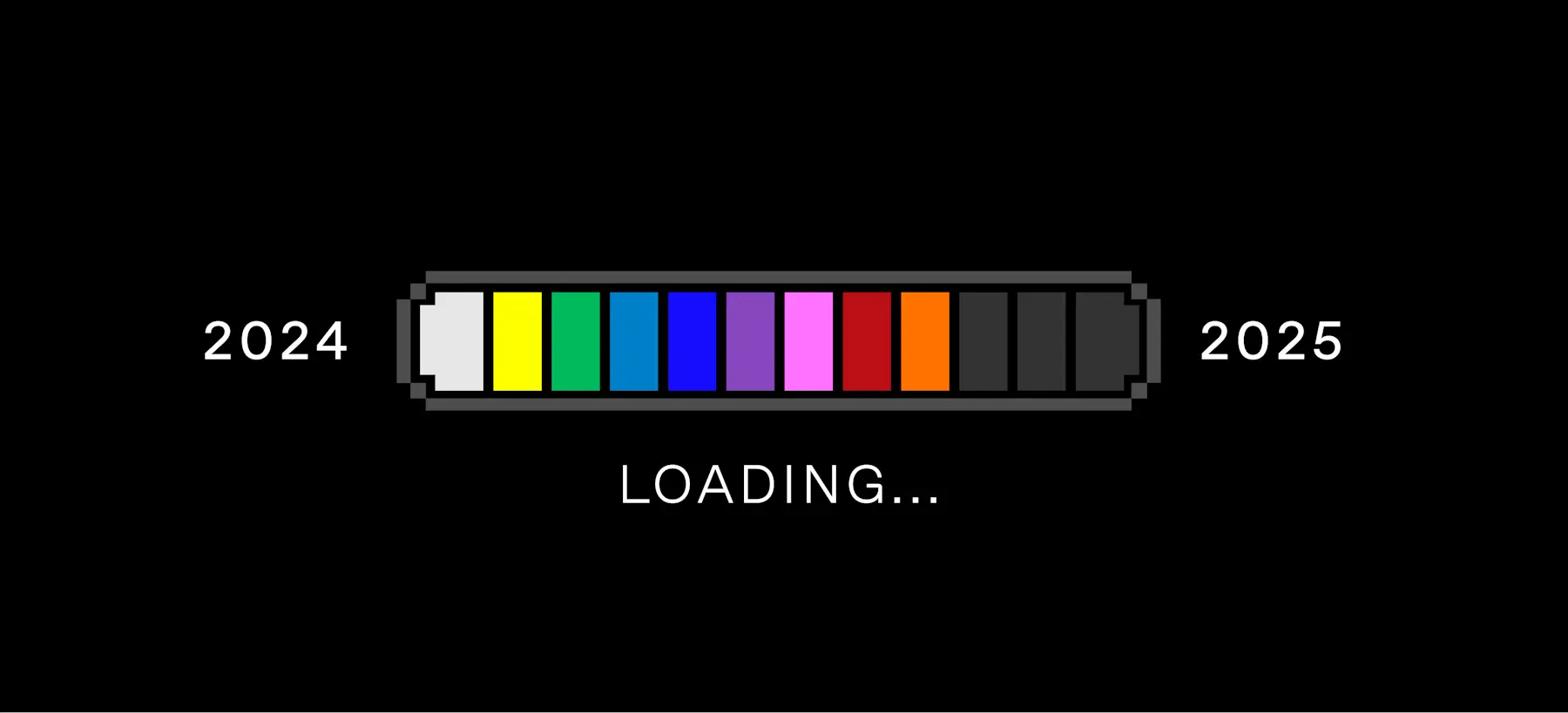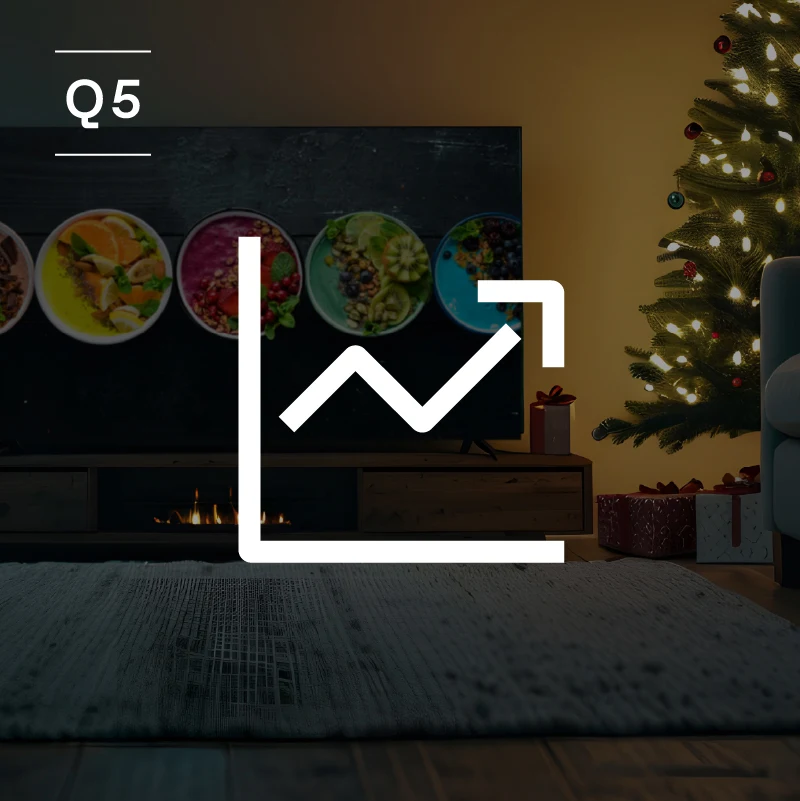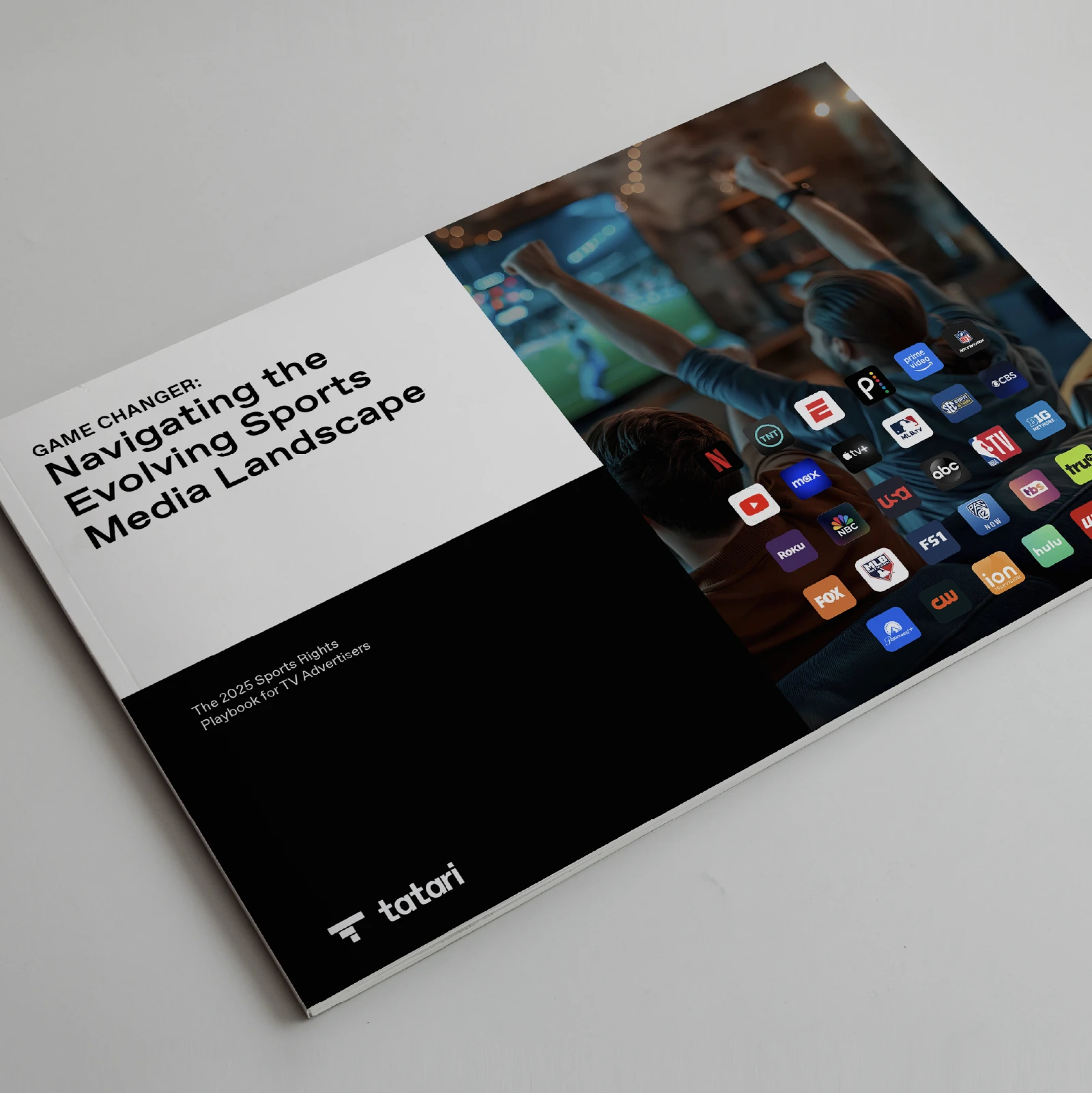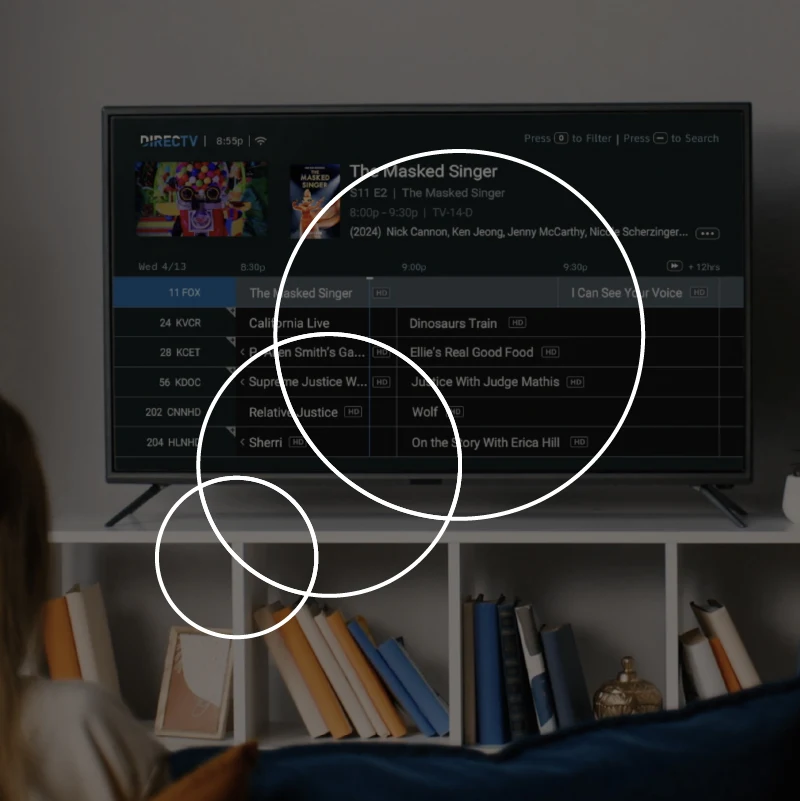
How to Budget and Plan for TV in 2025
The TV landscape has undergone a remarkable metamorphosis in just the last year. From the explosive growth of streaming to the steady presence of linear, TV is in the midst of a seismic transformation that will continue to evolve each and every year. Despite these shifts, TV remains a tried and true medium for advertisers. In fact, TV has never been stronger.
According to Nielsen, the average American spends just over 5 hours a day glued to their televisions. Additionally, TV viewership is expected to grow, with 2024 reaching a projected 251 million viewers, up from 247 million in 2022. Is it any wonder TV advertising spend in the US is expected to reach $60.6 billion in 2024, accounting for nearly one-fifth of overall marketing budgets in the U.S.?
As TV continues to command a significant share of marketing budgets, it's critical to understand the key trends that will shape the TV landscape in 2025 and what that means for advertisers. Let’s take a look at what to expect this year.
TV CPMs Come Down as Digital Goes Up
The 2024 Paris Olympics earned the gold for NBCUniversal and TV advertisers, boasting an average of 30.6 million viewers across NBCU platforms—a staggering 82% increase compared to the 2020 Tokyo games. The 2024 summer games also set new records as the most-streamed Olympics to date. With record breaking records across streaming and linear, national TV advertising spend was up 10%. Meanwhile, the political advertising frenzy of 2024 funneled around $6.1 billion into TV ad campaigns, representing just over half of the total ad spend during the chaotic campaign season.
But 2025 presents a different picture. Without the Olympics or a major election cycle, a significant portion of ad dollars will disappear from the TV market. There’s also a significant increase in streaming inventory as platforms like Netflix and Amazon fully embrace ad-supported models. In short, reduced demand for high-profile content combined with increased supply will drive CPMs lower, creating opportunities for advertisers to secure premium TV spots at lower costs. This is further fueled by rising CPMs on digital platforms.
While CPMs reach new heights across platforms like Meta and Tik Tok, advertisers are finding TV to be an increasingly enticing option for achieving cost-effective reach and engagement. Streaming in particular will benefit from larger marketing budgets in 2025 as a result of price cuts across platforms. Netflix, for example, has reduced its CPMs while the average streaming CPM for a 30-second spot declined by 16.7% in 2024.
Key Takeaway:
With TV more accessible than ever, 2025 may be the best year to diversify marketing budgets and dedicate dollars to both linear and streaming TV. For new TV advertisers testing the waters, a small budget could still get you enough exposure to incremental audiences to help drive your marketing goals. For established TV advertisers, this will be the year to go even bigger.
Streaming is Surging, FAST is Growing (Fast), and it’s all Scalable
Not to sound like a broken record, but streaming TV continues its rapid growth, further cementing its place as the fastest growing media channel. According to eMarketer, there will be 193.4M ad-supported streaming viewers in 2025, more than half of the U.S. population.
Streaming has already surpassed cable and broadcast TV in total viewership, and its rapid evolution shows no signs of slowing down. In 2024, 73% of adults reported streaming as their primary method of TV and video consumption, a significant jump from 42% in 2023. U.S. adults also spent an average of 123 minutes watching streaming daily—second only to mobile devices.
Streaming’s reach extends across demographics. According to MRI, streamers have a median age of 45.3 and a median HHI of $91,427. While 84% of Gen Z cite streaming as their first choice for watching TV, we’re likely going to see an influx of older viewers adopt streaming services in 2025 as they play catch-up to younger generations that were early adopters. These new users will also lift the median HHI, giving advertisers exposure to more affluent consumers.
No matter who’s streaming, data shows viewers are very responsive to ads. Based on data across Tatari clients, streaming response rate is typically higher than on linear TV.
As streaming viewership exploded, so has the price for many streaming services. What was intended to be a more cost-effective option for TV viewers to watch what they wanted, when they wanted - without commercials, has instead become a costly endeavor that often rivals the expense of the cable costs consumers were hoping to ditch. From Netflix to Disney, subscription costs have increased year-over-year. With streaming fees continuing to climb, more subscribers are opting to watch what they want, when they want - with commercials. In fact, two-thirds of TV viewers would prefer watching ads if it saves on subscription costs. This is good news for advertisers and publishers as well, since ARPUs are higher in an ad-supported model, incentivizing them to make the switch to ads.
For the first time, the majority of streaming sign-ups were ad-supported. Netflix’s ad-supported model recently reached 70 million global monthly active users just two years after it was introduced.
But ad-supported tiers offered by streaming giants like Netflix and Hulu are not the first to do so. Free streaming services, also known as FAST (Free Ad-Supported Streaming Television) have been around for almost a decade. Combining the traditional broadcast model with modern technology, FAST offers a variety of old and new TV content with no subscription fees. Solely supported by advertising, the number of FAST users continues to grow.
FAST programming takes advantage of existing content libraries and curates channels based on specific topics like game shows, travel, nature, and news. You can even watch 24 hours of Three’s Company if you so choose. While most of the content is older, licensed programming, some FAST providers have dipped their toes into live sports with developmental leagues and niche leagues; think independent pro wrestling and curling. While FAST offers on-demand content, it also utilizes direct feeds from linear TV. More about linear later.
While Pluto and Tubi have been dominant players, a huge variety of options are available including genre-based streamers like Hallmark and Crunchyroll. But major FAST channels could see consolidation on the horizon. Despite its quick growth, Amazon recently shuttered its FAST service, Freevee, despite launching just two years ago as they recently opened up ads on Prime. Likewise, Pluto’s future remains uncertain amid potential shifts like Paramount Global’s merger with Skydance.
No matter how the FAST landscape evolves, one thing is clear; consumers want it as an option. 73% of FAST users say TV is more enjoyable this way. With so much ad-supported programming at their disposal, our clients will be able to leverage the digital nature of FAST platforms to target audiences based on specific hobbies and interests at a lower cost than most digital channels.
Still, you might be wondering if you can still reach an incremental audience at scale on streaming?
We know streaming publishers have very minimal overlap when it comes to viewers, therefore ad impressions across streaming have less frequency and are often lower than on linear. On linear TV, there’s a natural point where reach levels off as network inventory becomes fully utilized. Less overlap between streaming publishers makes running TV campaigns very scalable.
For example, as a result of a summer sponsorship across Hulu for one of our health and wellness clients, which included premium ROS reach media, nearly a third of the audience was new/incremental to normal DR buys during the same time frame.
Even brands that invest heavily each month still has plenty of room to scale. Headroom analysis can help identify potential scaling opportunities or reductions to boost efficiency.
Key Takeaway:
With TV more accessible than ever, 2025 may be the best year to diversify marketing budgets and dedicate dollars to both linear and streaming TV. As we discussed, streaming offers the chance to hit new audiences who purely use their OTT subscriptions just for the hottest shows. Plus, you can drive incremental reach on streaming while complimenting your linear TV plans.
Linear is Alive and Well
When Mark Twain famously said “The reports of my death are greatly exaggerated,” he could have been talking about linear TV. The media industry has been trying to paint a picture that traditional, broadcast TV is on its last legs, predicting its demise year after year. But linear TV remains alive and well.
While it’s true that streaming is capturing audiences from linear, 92% of TV households in the U.S. still watch some linear programming. And even as its share of media time is declining, linear TV will still command more video viewing time than social media and YouTube over the next couple of years. In 2025, TV viewers in the U.S. will spend two hours and 49 minutes per day watching linear TV, vastly more time than with social video’s 53 minutes and YouTube’s 37 minutes, as reported by eMarketer. This type of engagement is still very appealing to advertisers and a big reason linear remains the the second-largest marketing channel by ad spend, after digital. Linear TV ad spend exceeds streaming due to linear’s overwhelming advantage in ad exposure.
What’s more, according to Get The Score, in the first half of 2024, 86.93% of all ad time on TV was viewed on Pay TV or Broadcast, with only 13.07% on streaming platforms. This data underscores that time spent watching content does not necessarily equate to available ad inventory.
Meanwhile, a significant amount of the inventory distributed to that 40% is actually sold via linear. This is especially prevalent with FAST networks, which currently accounts for 20-25% of ad-supported streaming as they grow in popularity among viewers and advertisers.
Linear TV has evolved. Streaming viewers watch linear content through ad-supported TV services like Tubi and YouTube TV. And a lot of live streaming events like NFL football and WWE wrestling come from linear feeds. So linear is actually helping other platforms thrive.
Speaking of live events, it remains the cornerstone of linear TV. When major news breaks, viewers turn to traditional television for reliable coverage and commentary. Similarly, major sports events continue to draw massive audiences, as do star-studded awards shows, creating powerful moments for advertisers.
Key Takeaway:
Linear will remain a vital component of your 2025 advertising strategy. As evident by the numbers, viewers are not ready to turn it off, especially for most of the major live events and tentpole events that will air throughout the year. Its wide reach and scale, coupled with its contextual relevance makes it as relevant for advertisers today as it has been decades earlier. In the post-Olympics landscape, there will be opportunities for big discounts that can only be secured on linear through last minute buying opportunities - sometimes as high as 70%. These fire sales, as they are called, may pop up more frequently in 2025.
Ultimately, as we move into 2025, it will no longer be about choosing to run on either linear or streaming, it will be about leveraging the distinct strengths of both to craft TV campaigns that drive deeper connections and deliver stronger results. TV viewers don’t make a distinction between linear and streaming, neither should advertisers.
Sports Reigns Supreme
From football to baseball, live sports continue to be the most dependable cornerstone for capturing mass audience engagement. According to eMarketer, live sports draws 155 million viewers in the US alone, just under half of the population. It consistently tops ratings across key advertiser demographics. According to Nielsen, live sports broadcasts secured nine of the top 10 spots and 12 of the top 20 among primetime cable shows in 2024. And the trend looks to continue in 2025.
The 2024 Super Bowl was the most watched NFL game in history, averaging 120.3 million viewers on CBS alone, making it the largest audience for a single-network telecast to date. The 2025 Super Bowl is already sold out on linear, with FOX securing record-breaking rates for the biggest game of the year. The NFL as a whole is an advertising juggernaut, and not just for the marquee games. The elevated viewership of the NFL helped deliver up to 35% incremental reach for Tatari clients last season.
The NFL is not the only league scoring a huge impact for advertisers. Major League Baseball’s fall playoffs is one of the best alternatives to drive response in front of live sports viewers. During last year’s World Series, Tatari clients saw lifts as high as 62x per spot (compared to their remaining linear buys).
While there is still a lot of room for advertisers to run ads during NFL games and other big league sports, it will not be cheap or as simple as it has been in the past.
Despite dropping CPMs for TV overall, advertising on live sports is increasing, with rates often fluctuating wildly by the day. But advertisers are willing to pay for the stable viewership that live sports offers. While football led the way, live sports accounted for nearly 40% of US national TV ad spend in both Q4 2022 and Q4 2023.
Live sports helped breathe new life into linear TV with massive tentpole events like the Super Bowl and The World Series, but streaming continues to capture more share of viewers. The number of sports fans streaming and watching on digital has already surpassed linear and is expected to gain an additional 27.7 million viewers between 2024 and 2028.
This explosive growth has led to a fierce competition between traditional broadcasters and streaming platforms for these highly coveted viewers. From Amazon’s $1B annual deal for NFL Thursday Night Football, to the NBA’s $76B deal to air games on NBC and Amazon beginning next season, major sports rights are consolidating and concentrating under a few entirely new set of (dominant) players, leaving a fragmented media buying landscape for advertisers to navigate. (Check out our guide to crafting TV ad campaigns for every major sports league.)
Key Takeaway:
Live sports viewers are highly coveted for good reason, they are deeply loyal and highly engaged - 80% say they tend to remember ads seen during live sports programming, according to a study by LG. The cost is well worth the reach, but time is of the essence. For major events, it is important to plan well in advance. And while linear still may hold its price for some events, Amazon and Netflix’s bigger investment in live sports may drive streaming prices higher across the board.
TV Becomes a Retargeting Channel
Retargeting has consistently been one of the most effective performance marketing strategies in digital media. By focusing on serving ads to audiences who have already shown interest in a brand’s products or services, these campaigns often achieve higher conversion rates, making the approach both logical and impactful. For the most part, retargeting has been limited to display ads and more recently, online video. But for many marketers, it’s also reached a saturation point when it comes to efficiency.
Enter TV. The growth of streaming has ushered in an era where advertisers can now test retargeting strategies on screens that demand attention - and can’t be as easily ignored like other formats. This means that TV advertising is no longer a stand-alone channel, but an extension of a broader omnichannel advertising strategy. It also (finally) signals a shift in the perception of TV being only good for brand awareness. It’s now a channel for performance - something we’ve been saying for years. This shift is good news for the 42% of advertisers that intend to increase their spending on performance marketing in 2025, according to the World Federation of Advertisers.
One of the primary reasons TV retargeting is now feasible is the wealth of data available through streaming. Advertisers can segment audiences based on website activity, mirroring the strategies used in digital retargeting. This allows them to deliver highly personalized ads to viewers who have previously interacted with their brand online. Imagine a scenario where a potential customer browses your online store for running shoes but doesn't make a purchase. With TV retargeting, you can now serve them ads for those same shoes or similar products while they're streaming their favorite shows on their smart TV.
The ability to leverage first-party data further empowers advertisers to refine their retargeting efforts. This granular data enables customization and optimization of campaigns. Automatic Content Recognition (ACR) technology is now readily available to help advertisers identify households that have been exposed to a TV ad and subsequently retarget them with a tailored ad. This precise targeting ensures that ad spend is used efficiently and effectively.
An analysis of our clients who are running retargeting campaigns shows consistent and significant efficiencies, driving more efficiency than prospecting on average.
Key Takeaway:
TV retargeting in 2025 represents a significant shift in the advertising landscape. It’s no longer reserved for giant brands with massive budgets. It empowers both new and experienced advertisers to combine the reach and impact of TV with the precision and personalization of digital, creating a powerful synergy that compliments your prospecting efforts to drive stronger performance. With campaigns starting as little as $1K per week, there’s no reason not to make TV a primary part of your 2025 advertising strategy.
Quarter-by-Quarter Recommendations
Q1: Football enters its final stretch, award-season begins, and consumers plan to set goals for the new year…
The New Year presents a prime opportunity for brands aligned with resolution-driven goals to increase their TV advertising efforts. At a time when Meta has announced restrictions to sensitive ad categories like health and wellness, Q1 will be a good time to move that budget to TV and target these viewers.
Even though we are in a post-election cycle, the new presidency should give a lift to news viewership. So if news is part of your TV advertising strategy, you may want to go heavy in Q1.
The biggest TV event of the year, the Super Bowl takes place on February 9. And even though ad inventory sold out back when the New York Jets were still considered actual contenders, there are many opportunities for brands to capitalize on the big game including buying floaters, the ads that typically run if the game goes into overtime, or testing spots on ancillary programming before and after the game.
From the Golden Globes to the Grammys, there are 5 major awards shows that are excellent opportunities to capture a massive, engaged audience for a non-sports, live event.
Q2: Spring brings fresh new shows, more sports, and summer vacations…
Q2 is a critical time to begin planning and negotiations for the following year, as networks will unveil their new programming at the Upfronts in New York this May. We expect to see even more streaming offerings than ever before. Registration for the 2025-2026 Upfronts closes in May, and negotiations start the same month, so we recommend planning as soon as possible.
From the start of the baseball season to the beginning of the NBA and NHL playoffs, Q2 is a great time to secure premium placements alongside live sports. Budgets should be allocated ahead of time to prepare accordingly. Last year’s NBA Finals drew the largest Game 1 audience share ever on ABC while 16.3 million viewers watched Game 7 of the 2024 Stanley Cup Finals, making it the second-most watched NHL game on record. Elsewhere the WNBA season gets rolling in May after setting record-breaking ratings last season.
As the calendar quickly turns to summer, Americans will be in vacation mode. According to travel data, the 2024 summer travel season reached record levels with 212 million Americans planning a trip. 2025 is expected to be no different. This is a great time to reach consumers who are making their holiday and summer travel plans in early Q2.
Q3: Football returns, no summer break for streaming, and the holiday season gets underway…
Most first-run shows will come to an end for the summer hiatus and repeats will reign supreme. Major networks will also introduce more reality-based shows and game shows until their big-budget productions return in late September.
While viewership tends to wane slightly during the summer, streaming continues to be hot. According to Nielsen, streaming platforms accounted for a record 40.3% of all TV usage last June. With more kids home from school and more travel, there’s more time to binge programming on-the-go.
Tailgating season kicks-off as both NCAA college football and the NFL swing into full gear.
Despite being a few months away, Q3 represents the optimal time to start planning your holiday advertising strategy. Brands focussed on capturing Q4 holiday sales must begin booking placements well in advance.
Q4: The holiday shopping season heats up, sports takes center stage, and Q5 offers additional opportunities…
While Black Friday/Cyber Monday (BFCM) isn’t until November, brands heavily reliant on Q4 holiday sales must begin booking placements well in advance. The most efficient rates in Q4 are often the result of conversations which start in Q3, so begin your planning process as early as possible to set yourself up for success.
Advertisers that still want to make a final push before the year closes can look to the so-called “Q5” period as a golden opportunity. Q5 represents the down period that extends from directly before Christmas up to New Year’s. This is a time on the TV advertising calendar when there are usually plenty of efficient media deals to be had as the market is far less competitive and consumers’ spending habits are still very high.
With baseball’s Fall Classic, the start of both the NBA and NHL seasons, and NFL football in the heart of its season, Q4 offers the rare time when all major leagues converge, commonly known as the sports equinox. The sports equinox occurs when all major leagues hold games on the same day.
We know that was a lot to digest, but we’re confident understanding the trends and opportunities shaping the TV landscape now will help set you up for success in 2025 and beyond.
If you’re ready to explore how to make TV part of your advertising strategy in 2025, let’s talk!

Dana Delle
I'm a strategist at Tatari and love watching TV after my 3 kids go to bed.
Related
Don’t Get Black Friday FOMO: For Many Brands, Q5 Matters More
Q5 represents the down period that extends from directly before Christmas up to New Year’s and is an excellent opportunity for brands to extend their holiday momentum on TV.
Read more
The Ultimate Guide to TV Sports Advertising
Discover the key players in the evolving sports media landscape and learn how to approach TV ad campaigns for each league to maximize your impact.
Read more
Why Linear TV Remains an Effective Advertising Strategy
In today's era of streaming TV, the enduring power of linear TV can easily be overlooked. While platforms like Netflix and Hulu dominate the market, traditional television continues to engage a vast and valuable audience.
Read more


